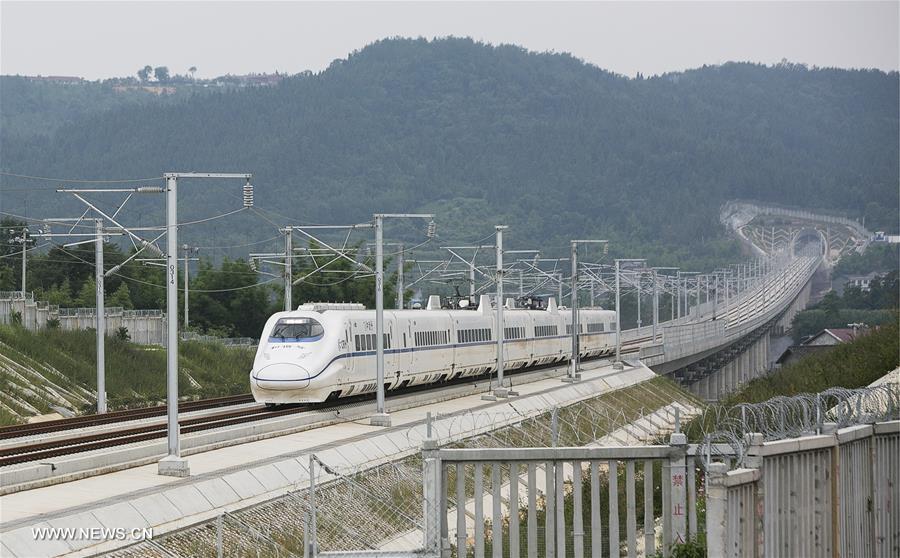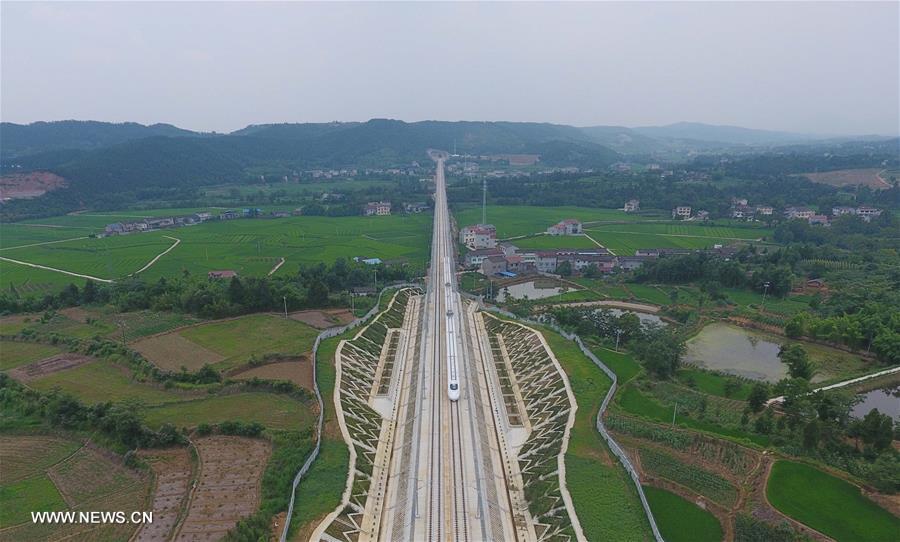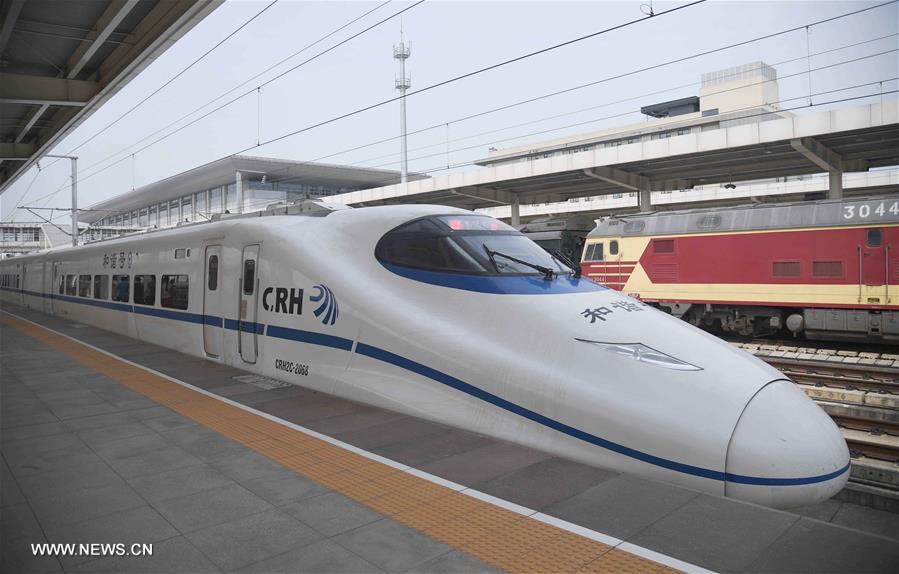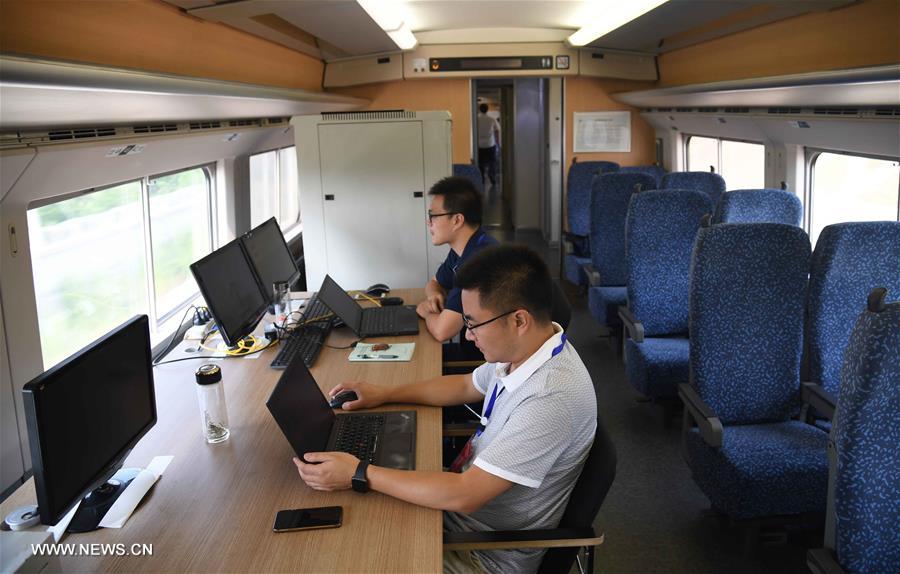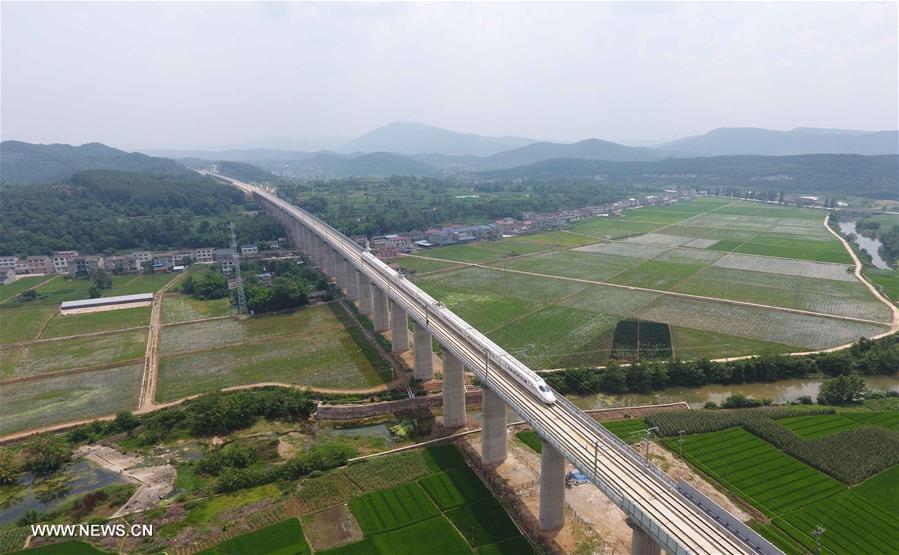This article is 60% about USA and 40% about China, but there are nice bits in it (emphasis mine).
Confidence in US innovation falling; China leads way on AI
In recent years, a tilt in China’s favour has become a landslide when it comes to innovation, says the founder of Web Summit, the organization behind the RISE conference in Hong Kong. In terms of AI, he adds, the US is being left for dust
By
JULY 8, 2017 9:00 AM (UTC+8)
Remember, lads, we're going to play in a binary formation. Programers ready their robots for a robot soccer match at the World Robot Conference 2016 in Beijing, China. Photo: Reuters/Thomas Peter
A number of months ago, I wrote about the direction of American innovation and discovered something incredible: China has eclipsed the US in terms of the creation of intellectual property.
This revelation alone may not sound earth-shattering, but when you consider what is happening in more detail you begin to discover some truly significant trends.
Must-reads from across Asia - directly to your inbox
In recent years, a tilt in China’s favour has become a landslide when it comes to innovation. In 2010, for example, Chinese companies had registered in the region of 380,000 patents compared to 470,000 in the US. Five years later, China has completely overtaken the US, registering in excess of 1,000,000 patents compared to 600,000 in the US. The gap between the two is now accelerating at an historically unprecedented pace. In fact, last year alone China increased its number of registered patents by 45%, while the number of registered patents in the US actually declined.
It doesn’t look like the US will be catching up soon either.
The top 1,000 US companies are investing less in research and development (R&D) than at any point over the last 50 years. US federal spending on R&D, as a percentage of GDP, is also at its lowest level in 40 years. Add to that a persistent decline in the number of startups being created in the US economy and it is unsurprising that some are saying America face a burgeoning innovation problem.
AI: the frontline of innovation
This trend hasn’t gone unnoticed in the US. In the final months of the Obama administration, the US government published two separate
which noted that the US is no longer the undisputed world leader in AI research and innovation, and
about China’s emergence as a major player in the field. The reports recommended increased expenditure on machine learning research, and enhanced collaboration between the US government and tech industry leaders to unlock the potentials of AI. But despite these efforts, 91% of the 1,268 top US and international tech founders, CEOs, investors and developers
in May 2017 said they believe the US government is “fatally underprepared” for the impact of AI on the US ecosystem.
AI appears to be the frontline to this battle of innovation between East and West at the moment and China’s influence is growing.
China has shown increasing interest in the American start-up world, notably in the field of AI.
Research firm CB Insights found that in funding rounds for American startups came close to US$10bn in value last year, while recent figures indicate that Chinese companies have invested in 51 US artificial intelligence companies to the tune of US$700m.
China’s dominance and US attitudes
China’s newfound dominance in AI isn’t a huge surprise. The country has invested massively in AI research output since 2013, and so far these efforts are yielding incredible results.
The three Chinese tech giants – Baidu, Didi, and Tencent – , with Baidu, in particular, taking several steps to cement itself among the world’s leading lights in the field. At its AI lab in Silicon Valley, 200 Baidu developers are pioneering driverless car technology, visual dictionaries, and facial- and speech-recognition software to rival the offerings of American competitors. Similarly, Tencent is in some of China’s leading science and technology universities, giving students access to WeChat’s enormous databases, while at the same time allowing Tencent to tap the best research and talent coming out of these institutions.
Reuters/Aly Song
Even at a government level, spending on research is growing at a double-digit rate annually.
It is said that China is preparing a to further domestic AI advances with moonshot projects, startup funding and academic research. From a US$2bn AI expenditure pledge in the little-known city of Xiangtan, to matching AI subsidies worth up to of US$1 million in Suzhou and Shenzhen, to incentivise the development of AI.
In comparison, the Trump administration’s proposed 2018 budget includes a 10% cut to the National Science Foundation’s funding for US AI development programs, despite the previous administration’s commitment to increase spending.
Attitudes of US investors appear to reflect growing concern. Twenty-eight percent of investors we surveyed ahead of our RISE event in Hong Kong cited China as the main threat to the US tech industry. It’s a significant figure as China’s influence continues to grow, but of further surprise was the 50% of all respondents who believed the US would lose its predominant position in the tech world to China within five years.
Confidence in the US dominance of the tech world is failing.
RISE: Where east meets west
Four years ago, I wanted to create a conference that could bridge the gap between East and West and showcase the innovation taking place across both marketplaces. RISE is now the leading tech event in Asia, welcoming 15,000 attendees this year. We recognize the truly global nature of technology. I think RISE is as important as ever so we explore the real world possibilities from the level of innovation we’re seeing from both China, the US and all over the world.
I think medium term it’s prudent to be at the very least cautious on American innovation. Historically what has set the United States apart has been its capacity to course-correct. I’ve no doubt the US will find a new course. But as it stands, China is in the driving seat.
Paddy Cosgrove is the CEO and founder of Web Summit, which has become Europe’s largest tech conference, attracting 53,000 attendees from 136 countries last year. Paddy also runs a number of other innovation events around the world – including the conference, has been staged in Hong Kong since 2015. This year’s RISE will take place in Hong Kong between July 11-13 and will bring together 15,000 tech leaders and attendees from Asia and the rest of the world. RISE is produced by the team behind Web Summit.

